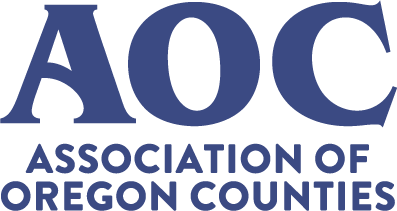
Feb 24, 2023 | AOC Business Partner
At the beginning of every year, the CIS Board of Trustees, including AOC Executive Director Gina Firman Nikkel, attend a day and a half strategic planning session to discuss the overall strength of the organization. The board reviews the status of CIS’ strategic initiatives and is presented with professional analysis from independent industry experts who assess the health and strength of CIS. Highlights from the board’s most recent session include:
- Financial Audit Presentation by Plante Moran, PLLC
- Property/Casualty (P/C) Trust Actuarial presentation by Aon Risk Consultants, Inc.
- Capital Adequacy Assessment for CIS Benefits and P/C Trust by PricewaterhouseCoopers (PwC)
- CIS Collaboration Center Update
- Managing the Risks of Post-Traumatic Stress Disorder (PTSD) in Public Safety
- Reinsurance Markets and Planning
Financial Audit
Plante Moran, one of the nation’s largest accounting firms, verified CIS’ good standing and strong financial footing — giving the organization a clean audit. The firm shared with the board that CIS’ accounting principles are solid (see full audit on CIS’ website). The audit report did provide an overview of the investment losses that CIS faced with the decreased market value from bonds and stocks in 2022 — but CIS weathered these adjustments for unrealized market value changes and maintained extremely solid financials. They concluded that CIS’ finances are appropriately reported, and the organization’s accounting systems are well-organized.
Actuarial Report
The respected actuarial firm, Aon Risk Consultants, analyzed CIS’ past experiences to evaluate the financial impact of current economic and social trends on future events. Aon’s report helps determine CIS’ funding target for the upcoming fiscal year. The actuaries noted that liabilities related to public safety services were increasingly costly to settle. They also noted an increase in auto liability claims. However, they explained that CIS’ experience with public safety services and auto liability claims followed trends that they noticed with other risk pooling programs across the nation.
PricewaterhouseCoopers Assesses CIS’ Capital Adequacy
PricewaterhouseCoopers firm (PwC) provided the CIS Board with a capital adequacy assessment for the CIS Benefits Trusts as well as the Property/Casualty (P/C) Trust during the session. They conducted a formal analysis of capital reserve funding requirements. The analysis was based on the requirements of the Member Equity Policy and considered many internal and external factors including underwriting risk, reserving risk, asset and credit risk, and operational risk.
PwC’s report found that both CIS’ capital for the Benefits Trusts as well as the P/C Trust is adequate and are in the proper range. This was important because it confirms that CIS has enough funds in reserves to cover catastrophic claims and other financial disruptions — such as the market value declines on investments.
Collaboration Center Update
The CIS Board provided direction to staff to begin plans for a new Collaboration Center to serve as an office for staff and training center for members and agents. CIS sold its Salem and Tigard office buildings, opened a temporary Wilsonville office, and purchased land in Wilsonville for a future Collaboration Center.
Plans call for a building with multiple meeting rooms, including a large room that can be used for member/agent training. Staff has selected an owner’s representative, architectural firm, and construction manager/general contractor through request for proposal (RFP) processes. CIS plans to meet with the architectural firm this quarter to kick-off the design process.
Managing the Risks of Post-Traumatic Stress Disorder (PTSD) in Public Safety
In June 2019, Senate Bill 507 passed, making PTSD a presumption for public safety workers (i.e., full-time firefighters, police officers, corrections officers, parole/probation officers, and first responders). CIS supports public safety workers having presumptive claims. CIS’ public safety team is working proactively to prevent PTSD claims by:
- Providing critical incident grants to public safety personnel and in some cases, non-public safety, to receive mental health services that have a focus on PTSD.
- Providing training around PTSD via Employee Assistance Program (EAP), peer support, and total worker health.
- Developing mental health providers around the state that have a focus on PTSD in public safety or military.
- Including CIS Benefits Director Mike Beyrouty to find ways for the CIS Benefits programs to support PTSD-prevention efforts.
The purpose of the report was to begin CIS Board discussions on additional services that can help reduce the impact of PTSD.
Reinsurance Markets and Planning
CIS purchases reinsurance to protect the P/C Trust from catastrophic and high dollar claims.
For property, CIS self-insures the first $500,000 of each claim and offers $600 million of shared limits. For liability, CIS self-insures the first $1 million per claim but offers liability coverage up to $20 million. For cyber, CIS self-insures the first $250,000 of each claim and offers an optional reinsured tier of coverage with limits up to $1.25 million.
Reinsurance coverage cycles between soft and hard markets. Experts point to missed earnings targets in recent years as evidence that the industry is in a hard market. This means reinsurers have greater bargaining power and can push for higher premiums and restructure terms to their advantage, such as limiting coverage for certain risks or demanding higher retentions (deductibles).
CIS marketed reinsurance coverage to dozens of carriers during 2022 to maintain the best carriers, pricing, and terms to financially back its property and liability programs. Marketing efforts included strengthening partnerships with existing carriers and identifying new carriers to diversify risks and increase capacity.
In this tough environment, CIS’ efforts to build and strengthen its reinsurance partnerships means that they can retain the needed reinsurance despite a hard market.
Contributed by: Bill LaMarche | CIS Public and Member Relations Manager
*Sponsored content provided by AOC Business Partner.

Feb 24, 2023 | AOC Business Partner
At the recent Academy of Architecture for Justice Conference, I had the opportunity to facilitate discussion on equity in the justice system. These discussions focused on knowledge communities in education, social services, nonprofit organization and justice agencies couples with resources, and evidence-based support systems needed to create a healthy society.
The Challenges: We know that healthy family relationships have a positive impact on the incarcerated, their children, and their loved ones. Strong relationships can improve the cause-and-effect cycle of recidivism and reduce the social, economic, educational, and health consequences to those within the secure treatment environment. These relationships, however, often face barriers by the very facilities built to house them. For instance, programs that encourage incarcerated mothers to record themselves reading storybooks to their children often must resort to a noisy corridor due to lack of dedicated private space. Other facilities may lack accessible and welcoming visitation rooms to connect families. Organizations who dedicate time to engaging at-risk youth lack flexible and comfortable spaces to bring education to their communities. These are the sorts of challenges that community partners face in their work and yet, they are often not at the table when it comes time to plan facilities.
The Opportunities: Working together with our government agency clients, we’re bringing more stakeholder voices to the table, working with our clients to find creative ways to integrate community partners into the big picture of justice facility designs. When we couple our design knowledge and the agency needs with the offerings of community partners, we all help to restore individuals back to their families and communities. Together we’re preparing spaces for a more equitable, healing, and transformative environment for individuals and the communities where they live. We design this way because we always remember that the incarcerated are individuals with children, partners, and dreams of once again making a positive impact on society.
The opportunities abound that can make a difference in how we deliver services and resources that positively impact individuals and communities. We simply need to advocate for equity for all stakeholders in justice design.
Contributed by: Joanna Wozniak, AIA | DLR Group, Senior Associate
*Sponsored content provided by AOC Business Partner.

Feb 24, 2023 | AOC News
The March Economic and Revenue Forecast was presented during a joint meeting of the Senate Committee on Finance and Revenue and the House Committee on Revenue and House Revenue Committees on Feb. 22. The committees heard from state economists at the Office of Economic Analysis that there will be “additional resources available for policymakers” as they develop the 23-25 biennium budget. Compared to the December Economic and Revenue Forecast the projected ending balance is up $487.1 million. That said, analysts also noted there is still an amount of uncertainty, including a full tax cycle broaching in April and noted the office will be in a better position in the middle of May when they present the close-of-session forecast to understand actual receipts and available funds. The May Economic and Revenue Forecast will be used by lawmakers to develop the 23-25 biennial budget. The latest projections could help eliminate the projected $560 million shortfall predicted by analysts in December.
Corporate and personal income taxes remain strong, showing 25 percent annual growth over the past five years, far more rapid than underlying measures of profits would suggest. Analysts commented that with the improved baseline economic outlook, additional gains in most taxes are expected through the 23-25 biennium, with a notable exception in the marijuana tax, which is expected to fall by 11 percent due to low prices, reducing drug treatment funds.
New Facts
- Fourth quarter personal income tax collections came in $261.6 million (9.4 percent) above the December 2022 forecast.
- Fourth quarter corporate income tax collections came in $131.1 million (54.6 percent) above the December 2022 forecast.
- Fourth quarter state personal income was $1.1 billion (-0.4 percent) below the December 2022 forecast.
- Fourth quarter state employment was 6,655 jobs (0.3 percent) above the December 2022 forecast.
Change Since Close of Session
- Personal income tax revenue is up $3,557.4 million (17.2 percent) from the 2021 close-of-session estimate.
- Corporate tax revenue is up $1,545.5 million (115.0 percent) from the 2021 close-of-session estimate.
- General Fund gross revenue is up $5,483.6 million (23.4 percent) from the 2021 close-of-session estimate.
- Net General Fund and Lottery fund resources are up $6,653.6 million (24 percent) from the 2021 close-of-session estimate.
Kicker Funds Implied by Forecast
- Personal – A personal kicker of $3,938.2 million is projected for 2023.
- Corporate – A corporate tax revenue of $1,545.5 million is projected to be dedicated to K-12 education spending in the 23-25 biennium.
Revenue Changes
- Projected 21-23 biennium net General Fund resources are up $487.1 million (1.7 percent) from the December 2022 forecast.
- Projected 2021-23 Lottery Fund resources are up $16.4 million (0.9 percent) from the December 2022 forecast.
- Projected combined net General Fund and Lottery Fund resources are up $503.5 million (1.5 percent) from the December 2022 forecast.
Ending Balance
- The projected ending balance is up $4,065.2 million from the 2021 close-of-session estimate.
- The projected ending balance is up $487.1 million from the December 2022 forecast.
- The Rainy Day Fund is projected to receive $278.6 million following the 2021-23 biennium.
Contributed by: Anna Braun | AOC Contract Lobbyist, Government, Revenue, and Veterans

Feb 24, 2023 | AOC Advocacy
While a lot of state agency work and stakeholder engagement by the governor’s office goes into the crafting of the Governor’s Recommended Budget (GRB), it’s important to remember that the GRB is in fact only a recommendation and could look significantly different from the Legislatively Adopted Budget (LAB) we see at the end of session. Below are brief summaries of the GRB by AOC portfolio area, with notes on potential impacts to county services and any early developments in legislative activity.
HEALTH AND HUMAN SERVICES
The GRB for the 2023-2025 biennium prioritizes housing and homelessness, behavioral health, and education. It is a good starting point for negotiating behavioral health care investments in the coming months but creates a lot of extra ground to cover to reach needed investment in local public health modernization. Intellectual and developmental disabilities services have a good starting point with a recommendation to fully fund the new rate model for the entire biennium. There is an expedited “first 60 days” emergency homelessness response package in the works, but otherwise, the health and human services budget is usually among the last to be solidified.
Behavioral Health
Key components in the GRB for behavioral health include:
- Continuation of the $1.2 billion invested by the Legislature in 2021 and 2022 for behavioral health system infrastructure improvements.
- $14.9 million General Fund for:
- Enhanced precommitment services for patients;
- A team at the Oregon Health Authority (OHA) to improve civil commitment services; and
- Expansion of jail diversion services to counties currently without it.
- Oregon State Hospital Stabilization
- $34.5 million General Fund to fund a sustainable 24/7 staffing model at the Oregon State Hospital;
- $4.2 million General Fund for the care of patients with complex psychiatric needs;
- $3.5 million General Fund for a dedicated health equity team for Oregon State Hospital (OSH) staff; and
- $10.0 million General Fund to provide evidence-based transition case management for patients who are leaving OSH houseless.
- Harm Reduction Clearinghouse – $40.0 million request from recent opioid settlements to continue support of the harm reduction clearinghouse to reduce preventable deaths associated with opioid use.
- Behavioral Health Crisis Line – $18.6 million in additional funding to support the 9-8-8 behavioral health crisis line, along with a legislative concept to require commercial payers to reimburse for mobile crisis services, and a $0.40 per line per month charge on phone lines to support 9-8-8 crisis intervention (HB 2757).
- Suicide Prevention/Intervention Services – $7.7 million General Fund to expand the child and adult suicide prevention, intervention, and postvention program to reduce suicide in Oregon.
- Behavioral Health Facility Investments
- $100 million Lottery Bond proceeds to expand acute psychiatric facilities in the community;
- $15 million General Fund for substance use disorder facilities and recovery centers; and
- $2.3 million for additional children’s psychiatric residential treatment capacity.
- Oregon Behavioral Health Coordination Center – $1.5 million General Fund to coordinate the availability of behavioral health residential beds statewide.
- Children and Youth Services – $11.5 million General Fund to support the expansion of behavioral rehabilitation services to all Medicaid clients who need it, the expansion of service hubs for transition aged-youth, and for targeted investments in the workforce for additional child psychiatrists and developmental pediatricians.
- Workforce Incentives – $20 million General Fund, nearly doubling the OHA’s Health Care Provider Incentive Program, with a priority to increase Oregon’s behavioral health workforce and to continue to recruit and retain diverse health care providers and attract providers in underserved areas.
Intellectual and Developmental Disabilities (I/DD)
“The budget fully funds the new rate model for the entire 24-month period of the biennium, using the new service groups based on the Oregon Needs Assessment and new rate model payment categories. The budget also includes funding for staffing and to secure a case management system, a universal provider portal, and a robust agency provider system to improve provider reporting capabilities and to replace the state’s antiquated system. These projects obtain a 90 percent federal match rate. The I/DD budget includes funding for two positions for cross-systems coordination with child welfare and other systems to ensure optimal services to parents with I/DD whose children receive services from child welfare and children with I/DD involved in the child welfare system. Finally, the I/DD budget includes funding and position authority for the Model Employer Program by funding a dedicated pool of positions within the Office of Developmental Disabilities Services to facilitate the hiring of people with I/DD throughout the department. The 2023-25 GRV for the I/DD program is $4,632.2 million total funds, a 9.4 percent increase from the 2021-23 LAB. The budget funds 1,005 positions.”
(Source: GRB p. 59)
Public Health
Despite the June 2022 Public Health Modernization: Funding Report to Legislative Fiscal Office detailing a conservative request for $256 million for the coming biennium and noting the continual massive underfunding of the initiative since its inception in 2015, the GRB allocates only $100 million for modernization.
Revenue Summary: “the state’s ability to provide program services is greatly influenced by Federal Funds availability and by the rules guiding the use of those funds. In addition, the rate of federal revenue matching for many programs is tied to the Federal Medical Assistance Percentage (FMAP) rate, which changes annually and is not controlled by state policy. This greatly impacts the amount of General Fund needed to maintain programs. The standard FMAP rate will decrease from 60.3 percent in 2023-25 to 59.3 percent next biennium. However, for 2023-25, there are two other primary changes to the FMAP adjustment, including the expiration of the enhanced public health emergency FMAP rate and the expiration of the enhanced Home and Community Based Services FMAP rate approved for part of the 2021-23 biennium through the American Rescue Plan Act. The combined impact from these changes results in a need for an additional $413.4 million General Fund in 2023-25. This assumes the wind down of the enhanced public health emergency FMAP rate in the first six months of 2023-25 as approved through the 2023 federal omnibus bill.” (GRB p. 55)
Key components in the GRB include (GRB p 64-65):
- Public Health Modernization –$50.0 million General Fund to sustain public health capacity to respond to emerging needs for local public health authorities, tribal governments, reproductive health providers, and community-based organizations, all to help modernize the state’s public health system. This investment includes $3.4 million to support enhanced access to reproductive health care across the state by increasing opportunities to support the health care workforce, reducing administrative barriers to participation in public programs, and improving and standardizing reproductive health reimbursement rates across OHA programs. This investment also funds the development of a statewide public health system plan to maximize upstream investments to address disparities for Black, Indigenous, and People of Color (BIPOC), and rural Oregonians.
- Universally Offered Home Visiting –$5.9 million General Fund to fund the full statewide expansion of the Universally Offered Home Visiting program for families with newborns so all parents have access to critical services, skills, and additional resources supporting healthy families.
- Lower Umatilla Basin Groundwater Mitigation –$3.0 million General Fund to address drinking water contamination in the Lower Umatilla Basin, paying for outreach, coordination, domestic well testing, and water treatment systems for affected households, as well as providing funding for statewide infrastructure for the drinking water safety program at OHA.
- Environmental Public Health – $1.0 million General Fund for a study to investigate the consumption of contaminated fish in Oregon, $0.2 million General Fund for a position focused on mapping for the Environmental Justice Council, and $0.1 million for an environmental public health inspector for Curry County.
- Personal Protective Equipment (PPE) Stockpile – $1.0 million General Fund to continue support for OHA’s stockpile of personal protective equipment, vaccines and vaccine kits, tests and testing supplies, and other medical equipment for use in response to a major disaster or public health emergency.
- Emergent Public Health Issues – $1.0 million General Fund for an investigation of contaminated fish consumption in the Lower Columbia Basin, $0.2 million General Fund for environmental justice data mapping work, and $0.1 million General Fund to support a public health investigator position in Curry County.
- Psilocybin Regulation – $6.6 million Other Funds from revenues to provide program development, regulatory oversight, and consumer protection related to the use of psilocybin.
NATURAL RESOURCES
The GRB for the 14 agencies that fall under the natural resources program area is a 12 percent reduction from the previous biennial allocated funds. A big portion of this reduction is because of the one-time funding that was allocated in 2021 and not slated to continue in 2023 ($500 million). The GRB does call for the allocation of $23.9 million for continued investments in the Private Forest Accord; it extends funding to support communities working to recover from the 2020 wildfires; funding for a water package that prioritizes data collection, drinking water, conservation efforts, and addressing agricultural needs.
Key components in the Governor’s Recommended Budget to flag include:
- A 35.8 percent reduction at the Department of Agriculture with the phase out of Oregon Agricultural Disaster Relief, meat inspection programs, as well as other one-time funding allocations.
- A 49.7 percent decrease in the Department of Energy’s budget with the elimination of investments made during the 21-23 biennium around energy incentive investments.
- A 2.5 percent increase for the Oregon Department of Fish and Wildlife to continue work on culvert repair to aid in further fish passage and deferred maintenance on department buildings.
- A 57.9 percent decrease from the previous biennium allocation to the Department of State Lands. This is coming from a separating of the Elliott State Forest from the Common School Fund, as well as a phase-out of the investments to the Oregon Ocean Science Trust.
- The Oregon Department of Forestry has a 16.3 percent decrease from the last biennial budget. There is a significant decrease in the Fire Protection Division – this is being driven by not continuing one-time investments.
It is important to note across all budgets, that the governor proposes a budget, and the Legislature produces a budget. If the Legislature wants to fund programs and agencies at different amounts, they have that discretion.
TRANSPORTATION
The GRB for the transportation program area is $5,772.2 million total funds, a 9.2 percent increase from the 21-23 biennium LAB. General Fund and Lottery Funds total $155.5 million, a 21.8 percent decrease from 21-23 levels. The decrease in General Fund and Lottery Funds is attributed to one-time funding supporting aviation construction projects to both state and privately-owned airports, as well as one-time funding provided to complete the 2020 wildfire cleanup efforts by the Oregon Department of Transportation (ODOT), and debt service for previously authorized projects.
The GRB for ODOT does not address the agency’s impending operations and maintenance deficit or the current planned reductions to local government programs.
Key elements of the GRB for the transportation program area include the following:
- The Local Government program – provides project delivery oversight and program administration to assist with transportation improvement projects within local jurisdictions. The program accounts for approximately 25 percent of Oregon State Transportation Improvement Program funding and up to 30 percent of the projects delivered by ODOT. The GRB is $565.4 million Other Funds and supports 55 positions. The budget supports the continuation of the Infrastructure, Investment, and Jobs Act (IIJA) ODOT projects. Funding for this program comes from the State Highway Fund and the Federal Highway Administration.
- Dundee-Newberg Bypass – A $9.6 million American Rescue Plan Act (ARPA) carry-forward to complete phase 2 construction at OR 219 through the south side of Newberg connecting the bypass to Oregon Highway 99W, east of Newberg.
- Interstate Bridge Replacement Project – Oregon needs a safer bridge that will serve future generations, provide transportation choices like high-capacity transit, and is a better solution to helping solve our climate crisis. The Interstate Bridge Replacement Project is an important partnership with Washington State and the federal government and this budget supports continued planning for a new Bridge. The governor has directed ODOT to develop funding options other than solely a gas tax, to limit the burden on working families as much as possible. The governor believes all options should be considered before a gas tax is put on the table to fund Oregon’s share of the bridge replacement. The governor expects ODOT to work closely with the Legislature and stakeholders on a viable path forward.
- Facilities Capital for ODOT – The budget invests in the second phase of the South Coast regional readiness facility, located outside of Coos Bay.
- Urban Mobility Strategy – The budget supports “Keep Oregon Moving,” the ongoing efforts of HB 3055 from the 2021 Legislative Session, which promotes the creation of the Toll Program Fund to reduce congestion in the Portland-Metro area.
- Road Usage Charge Program – The budget supports forward movement to transition the OReGO program, from a voluntary pay-by-the-mile road usage program, to a mandatory program.
- Small Business Development -The budget invests in expanding the Small Business Development program to improve and monitor ODOT’s performance and delivery to Disadvantaged Business Enterprise program.
- Aviation Operations and Improvements to State Airports – The budget provides funding for five capital projects at the Chiloquin, Aurora, Cottage Grove, and Lebanon State airports.
- Cape Blanco State Airport – The GRB includes $2.4 million of carry forward funding to complete the airport runway replacement and the electrical system upgrades.
Contributed by: Jessica Pratt | Legislative Affairs Manager, Health and Human Services
Branden Pursinger | Legislative Affairs Manager, Natural Resources
Brian Worley | County Road Program Manager

Feb 24, 2023 | AOC News
Counties currently included in the Governor’s Emergency Order 23-02 and counties that wish to be included are recommended to read through the entire webpage that has been established as the single point of information and contact for the homelessness state of emergency. The webpage was updated early Feb. with more specific directions for those intending to request inclusion.
The rollout of the executive order will be a collaboration between state and local emergency management offices and state and local housing authorities.
‘Local jurisdictions’ requesting inclusion will need to follow the steps below (sourced from the state webpage) and assemble a “Multi-Agency Coordination (MAC) group”
Instructions for requesting inclusion in the homelessness state of emergency
The governor will complete her first scheduled review of the emergency order on March 10, 2023. Local jurisdictions that would like to be included in the state of emergency must meet the qualifications listed below and are then encouraged to submit their request to The Oregon Department of Emergency Management (ODEM) at the email address below before March 10, 2023. To qualify for a review, a local jurisdiction must meet the following requirements:
-
- The unsheltered population in 2022 must be greater than 30 households, and
- The community has declared a local state of emergency related to homelessness, and
- At least one of the following is true:
-
- Unsheltered homelessness increased by 50 percent or more between 2017-2022, and/or
- The rate of unsheltered homelessness in 2022 was 80 percent or greater.
Once the jurisdiction confirms they meet the qualifications above, a request containing information will need to be submitted through ODEM at oem.recovery@oem.oregon.gov and approved by the governor.
What is a Multi-Agency Coordination (MAC) Group?
A Multi-Agency Coordination (MAC) group is a group for interagency management planning, coordination, and operational leadership to provide strategic coordination, identify resources, and manage goals.
The MAC group will lead in the development, completion, and deployment of the community plan. Local communities will work to identify interventions based on the needs of people experiencing unsheltered homelessness within the service region. The MAC groups will work continuously with Oregon Housing and Community Services (OHCS) and ODEM throughout the year to review data and amend plans as needed to ensure goals are met.
The local MAC group will include:
-
- Local jurisdictions (homelessness and emergency management staff);
- Public housing authority;
- Local homelessness agencies;
- Rapid rehousing service providers;
- Shelter developer/operator;
- Landlord associations; and
- Behavioral Health providers.
Contributed by: Jessica Pratt | Legislative Affairs Manager





